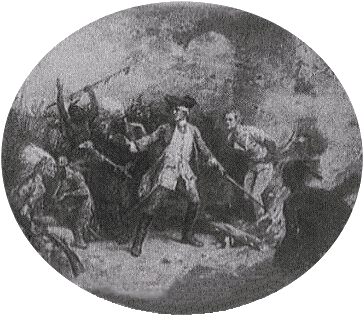
The Penacook Union included the following indian tribes;
Accominta, Agawam, Nashua, Morritigan, Naumkeag, Natticook, Newichawawock, Penacook,
Pentucket, Piscataqua, Souhegan, Squamscot, Wachusett, Wamesit, Weshacum, Winnecowet, and Winnipesaukee.
They had their own language:
PENACOOK comes from the indian word PENAKUK meaning "at the bottom of the hill"
The Salmon Falls River was known to the Penacooks as NEWICHWANNOC. It was pronouced NE-GE-WON-NUCK. and this word meant 'the place of many falls'
Gonic was known as SQUAMANAGONIC, this word meant 'the water of the clay place hill'
The Cocheco River is the original Pennacook indian name. The name is broken down as follows
CO (falls) CHE (great) CO (falls), thus Cocheco means 'falls and great falls'
The indian population was very sparse in this region. An Indian village would have a few hundred people and the villages were far apart from each other. The Indians lived in dome-shaped cabins called wigwams. A wigwam was made by using wooden poles that were tied into a dome-shaped 'skeleton'. Animal skins and bark would be laid over the poles. They obtained their food by fishing, hunting and farming. They grew pumpkins, squash, beans and corn. They would plant so much that the soil would become exhausted thus forcing them to find a new spot for a village. By the 1670's all the Indians in the region were at war with the white settlers.
If captured by indians the white man was either sent to Canada and held as hostage to be exchanged for a monetary payment or the indians would kill their white captives. The indian was not content just to kill their captive. They always made their victim's death a toturous experience. Examples of this is the treatment of 'Pork" Rogers. Around Chestnut Hill Rogers was captured by Indians. The indians tied Rogers to a tree and started a small smoky fire around him, as he was suffering from the fire the indians would cut of pieces of flesh and threw the flesh into his face. His body was found roasting in the coals the next day.
The early history of Rochester is filled with much combat between Indians and the white settlers. Many settlers were killed or captured. It was bad enough the Penacooks were warring with the white settlers but Mohawk indians from French Canada would make the trip to NH to add to the killing and capturing of white settlers. The last indian attack occurred on May 1, 1748. Jonathan Hodgon's wife was milking cows early in the morning when set upon by a party of indians. The indians killed her as her husband watched at a distance. By 1749 the indians had been driven off or killed by musket or disease,. In the 1750's the city of Rochester could concentrate on building a town instead of fending off indians.